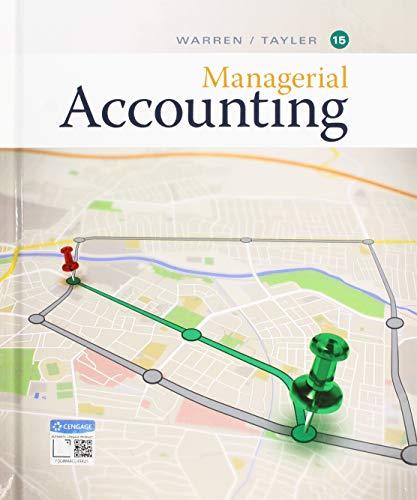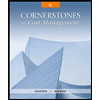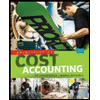Lysiak Corporation uses an activity based costing system to assign overhead costs to products. In the first stage, two overhead costs--equipment depreciation and supervisory expense-are allocated to three activity cost pools--Machining, Order Filling, and Other--based on resource consumption. Data to perform these allocations appear below: Overhead costs: Equipment depreciation $ 47,000 Supervisory expense $ 6,000 Distribution of Resource Consumption Across Activity Cost Pools: Activity Cost Pools Machining Order Filling Other Equipment depreciation 0.60 0.10 0.30 Supervisory expense 0.60 0.20 0.20 In the second stage, Machining costs are assigned to products using machine-hours (MHs) and Order Filling costs are assigned to products using the number of orders. The costs in the Other activity cost pool are not assigned to products. Activity data for the company's two products follow: Activity: MHs (Machining) Orders (Order Filling) Product C9 6,900 200 Product U0 3,100 800 Total 10,000 1,000 What is the overhead cost assigned to Product C9 under activity-based costing?
Process Costing
Process costing is a sort of operation costing which is employed to determine the value of a product at each process or stage of producing process, applicable where goods produced from a series of continuous operations or procedure.
Job Costing
Job costing is adhesive costs of each and every job involved in the production processes. It is an accounting measure. It is a method which determines the cost of specific jobs, which are performed according to the consumer’s specifications. Job costing is possible only in businesses where the production is done as per the customer’s requirement. For example, some customers order to manufacture furniture as per their needs.
ABC Costing
Cost Accounting is a form of managerial accounting that helps the company in assessing the total variable cost so as to compute the cost of production. Cost accounting is generally used by the management so as to ensure better decision-making. In comparison to financial accounting, cost accounting has to follow a set standard ad can be used flexibly by the management as per their needs. The types of Cost Accounting include – Lean Accounting, Standard Costing, Marginal Costing and Activity Based Costing.
Lysiak Corporation uses an activity based costing system to assign overhead costs to products. In the first stage, two overhead costs--equipment
| Overhead costs: | ||
| Equipment depreciation | $ | 47,000 |
| Supervisory expense | $ | 6,000 |
Distribution of Resource Consumption Across Activity Cost Pools:
| Activity Cost Pools | |||
| Machining | Order Filling | Other | |
| Equipment depreciation | 0.60 | 0.10 | 0.30 |
| Supervisory expense | 0.60 | 0.20 | 0.20 |
In the second stage, Machining costs are assigned to products using machine-hours (MHs) and Order Filling costs are assigned to products using the number of orders. The costs in the Other activity cost pool are not assigned to products. Activity data for the company's two products follow:
Activity:
| MHs (Machining) | Orders (Order Filling) | |
| Product C9 | 6,900 | 200 |
| Product U0 | 3,100 | 800 |
| Total | 10,000 | 1,000 |
What is the overhead cost assigned to Product C9 under activity-based costing?
Trending now
This is a popular solution!
Step by step
Solved in 3 steps








